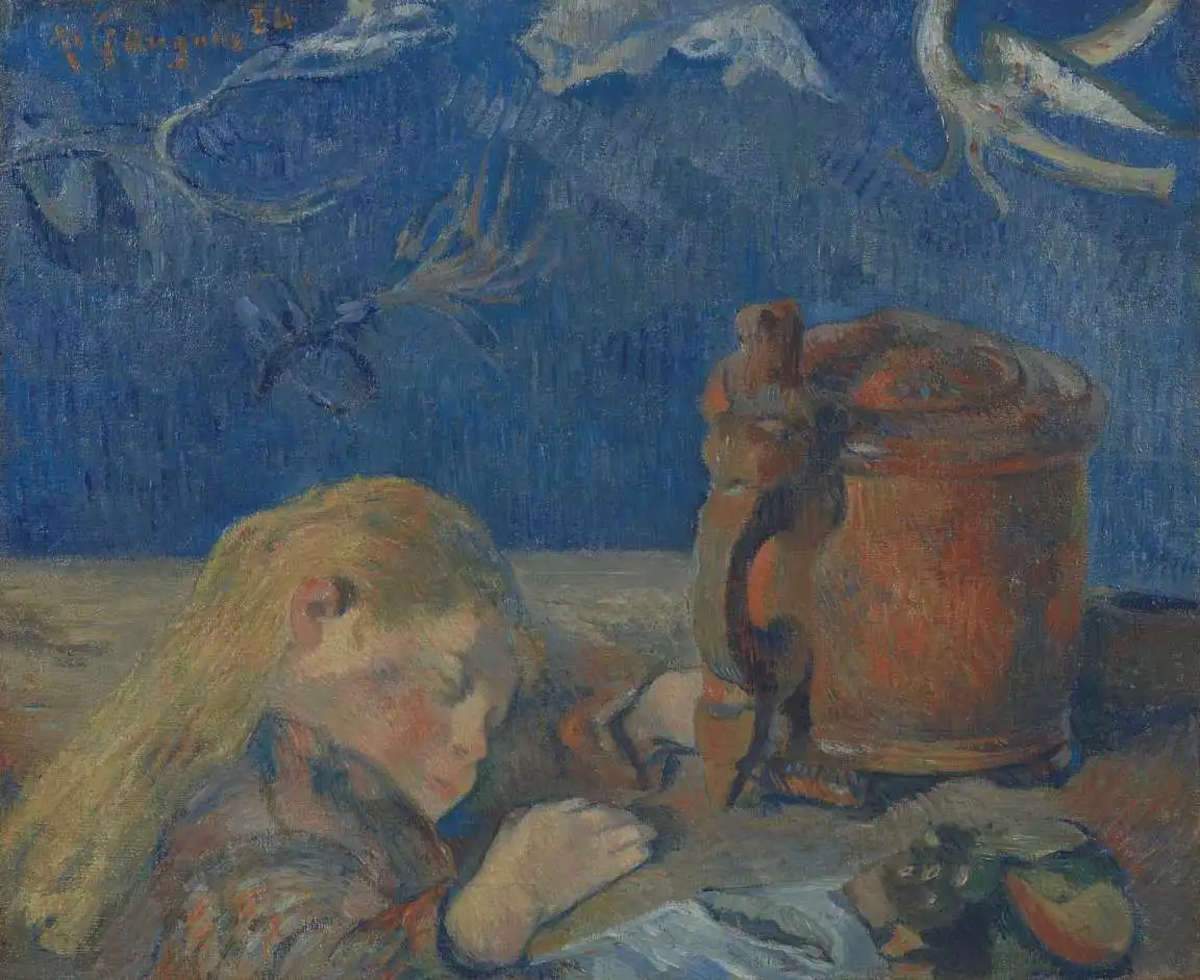Major purchase for the Van Gogh Museum in Amsterdam , which is securing a work by Paul Gauguin (Paris, 1848 - Hiva Oa, 1903), Clovis endormi (“Sleeping Clovis”), from 1884, a painting depicting Gauguin’s five-year-old son. The work had gone to auction at Christie’s in London in October 2023, with an estimate between £3 million and £5 million, but had found no buyers. Now, the painting has been purchased by the Dutch museum thanks to the support of the Vereniging R embrandt (Rembrandt Association), a fellowship that brings together 17,000 art enthusiasts from across the country and often takes the lead in similar transactions. The VriendenLoterij and the Yellow House Circle also contributed to the purchase.
Gauguin made the painting in Rouen, where he lived with his entire family. In the summer of 1884, Gauguin’s wife Mette left for Denmark with three of her children, and Gauguin remained in France with Clovis and his brother Jean. In the painting we see Clovis with his long blond hair, asleep on the table, next to a kind of mug, which came from Norway (it was an 18th-century object that ended up in Gauguin’s house thanks to his wife, the Danish Mette Gad) and a poorly decipherable object, which could be a doll. The combination of the unusual objects with the sleeping boy gives the work a dreamlike atmosphere.
The painting is part of a crucial period in the painter’s career. Indeed, until 1884 Gauguin mainly produced paintings closely related to the work of the Impressionists, with whom he exhibited several times. In 1884 he began a new phase of his careerù. In July he wrote to his colleague and friend Camille Pissarro thus, “Now that I have enough paintings to exhibit in Paris, I feel calmer about painting, I am now painting just for myself, in no hurry, and I can tell you that I am doing really adventurous things this time.” The painting with Clovis sleeping clearly belongs to these ’adventurous works’.
Gauguin had a special bond with Clovis. When the painter left his family in Denmark in June 1885 after joining them for some time, he brought only Clovis back to France. In Paris, father and son lived in absolute poverty, but despite the difficulties, according to Gauguin, Clovis still had a good character. In a letter, Gauguin wrote that Clovis “plays all alone in his corner without disturbing me.” Later, in 1886, Gauguin left Clovis in a boarding house (although he could not afford to pay for it) and left for Pont-Aven to devote himself completely to his art. Clovis would die prematurely in 1900, the day after his 21st birthday: he had not seen his father for years, because Gauguin had been living on the other side of the world, in Tahiti, since 1895.
The Van Gogh Museum purchased the work given the close connection Gauguin had with Vincent van Gogh. The two met in Paris in November 1887, and from there a close and complicated friendship was born. Today, the museum possesses, thanks to paintings bequeathed by Theo van Gogh and his wife Jo van Gogh-Bonger, several works by Gauguin that bear witness to this friendship. And thanks to the purchase of Clovis endormi, the museum can now better tell the story of Gauguin’s life and work before his meeting with Van Gogh, allowing the museum to offer the public a more complete picture of the artist.
Image: Paul Gauguin, Clovis endormi (1884; oil on canvas, 46 x 55.5 cm; Amsterdam, Van Gogh Museum)
 |
| Van Gogh Museum acquires Gauguin painting depicting his son |
Warning: the translation into English of the original Italian article was created using automatic tools. We undertake to review all articles, but we do not guarantee the total absence of inaccuracies in the translation due to the program. You can find the original by clicking on the ITA button. If you find any mistake,please contact us.